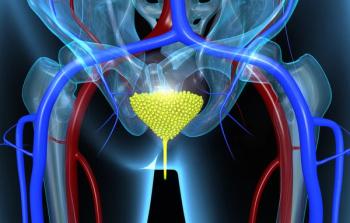
Are Stromal Cells Mediating Response to Immunotherapy in Bladder Cancer?
New research suggests that immune resistance in urothelial cancer may be mediated by stromal cells, which act as a source of EMT-related gene expression.
New research suggests that immune resistance in urothelial cancer may be mediated by stromal cells, which act as a source of epithelial-mesenchymal transition (EMT)-related gene expression. The findings offer a rationale for targeting both programmed death 1 (PD-1) and stromal elements.
“Immune checkpoint blockade has recently changed the treatment landscape for patients with metastatic urothelial cancer,” wrote study authors led by Li Wang, PhD, of the Icahn School of Medicine at Mount Sinai in New York. “Because only a subset of patients benefit from treatment, there remains a critical need to understand mechanisms of intrinsic resistance.”
Tumors that are infiltrated with T cells have a higher likelihood of responding to immune checkpoint blockade, and previous work has correlated T-cell infiltration with EMT-related gene expression; EMT involves epithelial cells assuming a mesenchymal phenotype, enhancing the chances of invasion and metastasis.
It has been unclear, though, whether higher EMT-related gene expression is related to improved response to checkpoint blockade or to immunotherapy resistance. The researchers used data from the Cancer Genome Atlas (TCGA), as well as a cohort of urothelial cancer patient–derived xenograft models, to examine the relationship between EMT-related expression and response to immunotherapy; the results were
First, they compared EMT-related gene expression, based on an average of 200 genes, with infiltrating T-cell abundance (ITA). The two were highly correlated (P < .0001), and this was confirmed using varying signatures of EMT-related expression.
Using 408 samples from TCGA, the researchers then examined EMT-related genes and ITA in specific urothelial carcinoma subtypes. Both markers were most highly expressed in luminal-infiltrated and basal-squamous tumors, compared with luminal, luminal-papillary, and neuronal subtypes.
Again using TCGA samples, they found that higher EMT-related gene expression is correlated with worse overall survival, with a hazard ratio of 1.45 (P = .0014 when treated as a continuous variable). ITA, in contrast, was not significantly associated with overall survival. Because the two markers were correlated with each other but offered differing prognostic impacts, the investigators combined the variables into a ratio, which was highly associated with overall survival. They were also more useful as a prognostic indicator when added together.
Using the patient-derived xenografts, they showed that stromal cells served as an important source of the EMT-related gene expression in urothelial cancer. Finally, they examined how these markers could be used in a cohort of patients treated with nivolumab. Patients with high infiltration of CD8 cells and low EMT/stroma gene expression had the highest response rates and longest progression-free and overall survival, while those with similarly high CD8 infiltration but low EMT/stroma gene expression had significantly worse outcomes.
“We showed that EMT-related gene expression and T-cell infiltration are positively correlated in urothelial cancer, yet confer disparate treatment response and prognostic information,” the authors concluded. “The balance of T-cell vs EMT/stromal elements may provide a more informative snapshot of the antitumor immune response than measures of T cells alone.” Future work in this field will include exploration of regimens combining PD-1/PD-L1 blockade with agents targeting stromal elements.
Newsletter
Stay up to date on recent advances in the multidisciplinary approach to cancer.






















































































